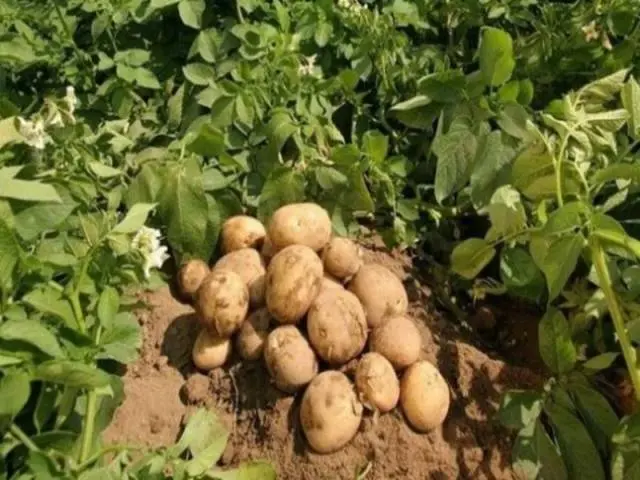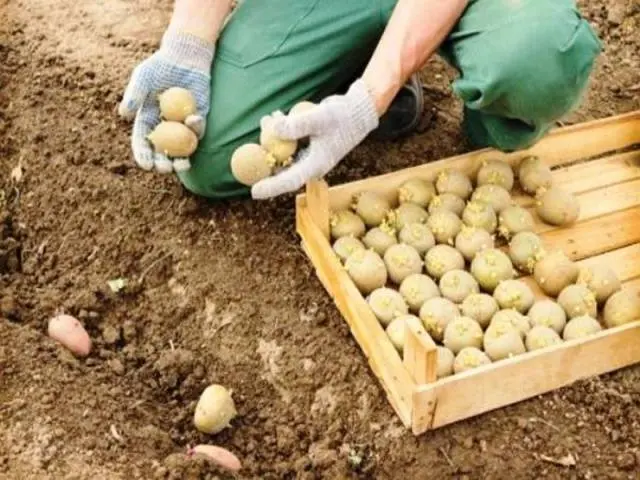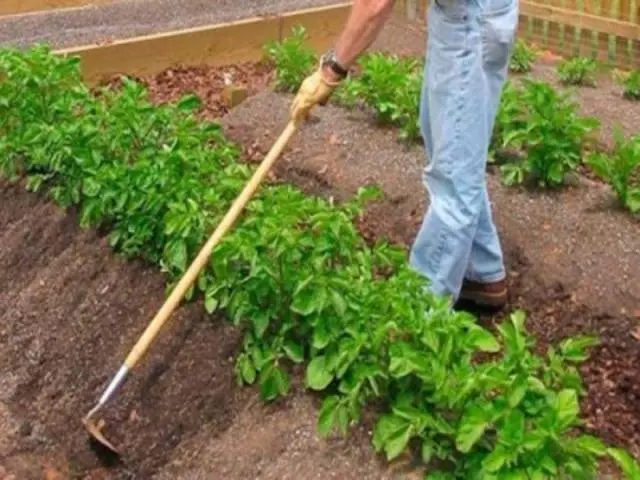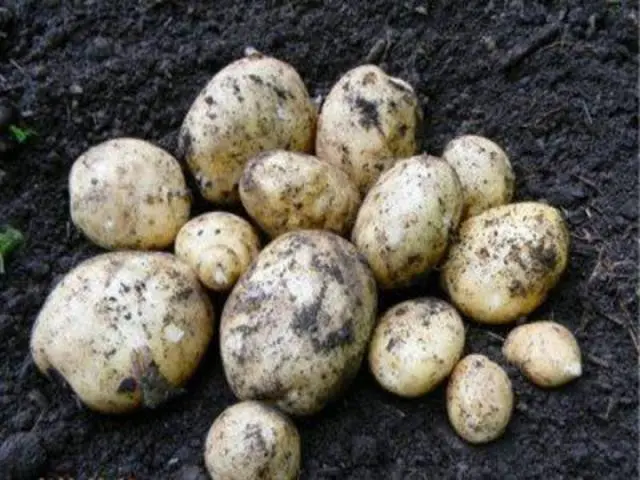Contents
It is almost impossible to find a worthy alternative to potatoes in the daily diet. Therefore, almost all gardeners strive to grow and harvest their potatoes. As a rule, great importance is attached to the choice of variety. This takes into account many factors: the climatic features of the region, the ripening time of the crop, the taste of the vegetable and the peculiarities of caring for the crop.
The Meteor variety cannot yet be called widespread, since it is quite young (only in 2013 it was added to the register of varietal achievements). However, the excellent taste of the Meteor variety and ease of care provide a serious increase in the number of its fans.
General characteristics of the variety
Meteor bushes grow tall with medium thickness stems and dark leaves. White flowers are small. Each bush forms about 9-11 large potatoes.
The tubers are covered with a thin skin of a cream shade. The inner cut of the potato of this variety has a light yellow color (as in the photo).

After planting, Meteor finally matures in approximately 65-70 days, which allows it to be classified as an early ripening variety. There was an opinion that until the color falls off, the potatoes are not dug. However, for this variety, it is possible to carry out the first “test” of the crop in 43-46 days.

The Meteor variety is distinguished by a high yield: 210-405 centners of tubers can be dug up per hectare. Such a big difference is determined by the level of plant care, weather conditions, and the location of the plots.
The distinctive quality of Meteor potatoes is excellent preservation, without loss of taste and appearance.
No significant shortcomings of the variety can be identified. It is quite natural that difficult weather conditions affect the size of the crop. However, if you make every effort to properly care for the variety, then the volume of the harvest will be quite satisfactory.
Peculiarities of growing
The main advantage of the Meteor potato variety is the ability to grow and bear fruit in various conditions. It is this quality that allows novice gardeners to easily and effortlessly grow this variety and harvest a decent harvest.
Planting potatoes
The optimal period for planting a variety is the beginning of May. According to popular belief, the right period is when the bird cherry blossoms. The main condition is well-warmed soil. The plot for the Meteor variety should be normally lit. Any shading is excluded.
Particular attention should be paid to preparing a piece of land about two weeks before planting. An ideal option is when cucumbers, legumes, onions, and cabbage grew in front of potatoes on the plot.
Landing stages
- Meteor potatoes are planted in rows. Between the pits, it is necessary to maintain a distance of about 30 cm. A strip of earth about 55-65 cm wide is laid on the aisle.
- The holes are dug to a depth of approximately 8-12 cm. Organic fertilizer is applied to each hole: 4-5 tbsp. l. wood ash and 650-700 g of dry humus. Alternatively, you can use bone meal (half a cup) and a tablespoon of nitrophoska. If there is no desire to rush around the site with a mass of bags, then you can buy a ready-made Kemira mixture in the store. Its producers offer different compositions, but all of them help to increase the yield of Meteor potatoes, improve the quality of the vegetable and increase its ability to be preserved.
- Two or three tubers are placed in the hole and buried.

To get the maximum yield, it is recommended to follow the rules for caring for Meteor potatoes: regular loosening of the soil and hilling of plants are carried out, especially after rains.

The essence of the method: the sprouted Meteora tubers are laid out on the ground in a row with a step of 20-25 cm. A distance of 90-100 cm is maintained between the rows. Then the potatoes are not pressed into the ground, but the soil is simply heated up on the tubers. A ridge is formed with a height of approximately 30-40 cm and a base of 55-60 cm. This form of bed should be maintained regularly, especially after rains, when the earth is washed away along the slopes.
The advantages of the method are obvious: Meteor potato tubers are located in ridges and do not require a shovel or pitchfork to get the crop. It is enough to move the soil a little at the top of the bed.
Watering and fertilizing the soil
It is advisable to water every ten days. Of course, this indicator can be considered conditional, since different regions will have their own requirements for the frequency of irrigation.
When watering, you should pay attention not to the quantity of watering, but to their quality. The earth should get wet at least 40 cm deep. The reference point for the need for watering is the loss of leaf elasticity and wilting of the tops. The best option for organizing irrigation is drip, in which water will constantly flow into the root system of the Meteor potato and no crust will appear on the soil surface.
For proper feeding, it is recommended to take into account the peculiarities of the growing season of Meteor potatoes. During the season, three main periods of potato development can be distinguished.
- The first stage – from the germination of tubers to the flowering of bushes, it lasts about 24-26 days. This period is characterized by increased growth of tops and the formation of Meteora tubers. It is recommended to make urea, ammonium nitrate.
- The second stage begins after flowering and lasts until the tops wither, which is approximately 25-27 days. This time can be considered the most important, as there is an intensive growth of Meteor potato tubers. It is advisable to fertilize the soil with superphosphate or add potassium sulfate.
- The third stage is the final wilting of the stems and foliage. The growth of tuber mass is still going on, but already more slowly. Mineral-organic mixtures are used: superphosphate and mullein solution.
Meteor potatoes are harvested after complete drying and withering of the tops.

Not all areas have favorable conditions for growing potatoes. Therefore, it is possible to improve the composition of the soil with the correct application of fertilizers.
Diseases and pests
An important advantage of the Meteor variety potato is its high resistance to a number of diseases: dry and ring rot, golden potato nematode. Also, this variety is characterized by an average resistance to late blight, scab, wrinkled / striped mosaic.
Since the Meteor variety is characterized by protection against many diseases, there is no need to especially deal with the processing of bushes. As a preventive measure, spraying potatoes with insecticides is welcome to provide additional protection against insects.
Meteor potatoes can be attributed to promising varieties due to their excellent nutritional qualities, disease resistance and the possibility of planting everywhere. Even with minimal but proper care, potatoes will give a bountiful harvest.









